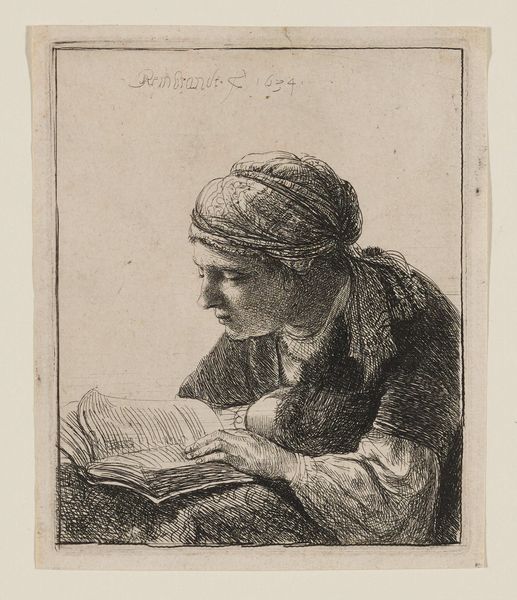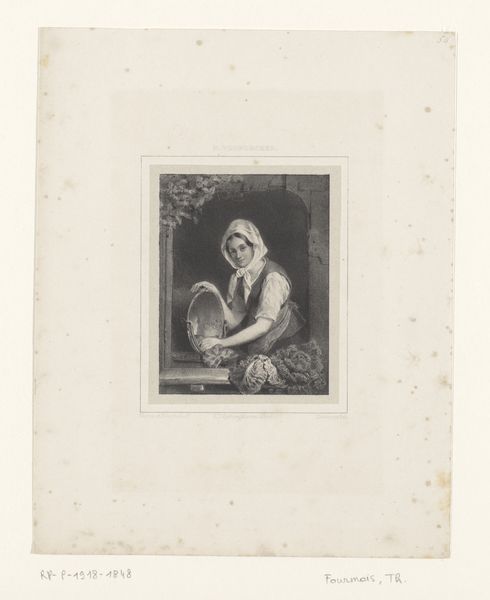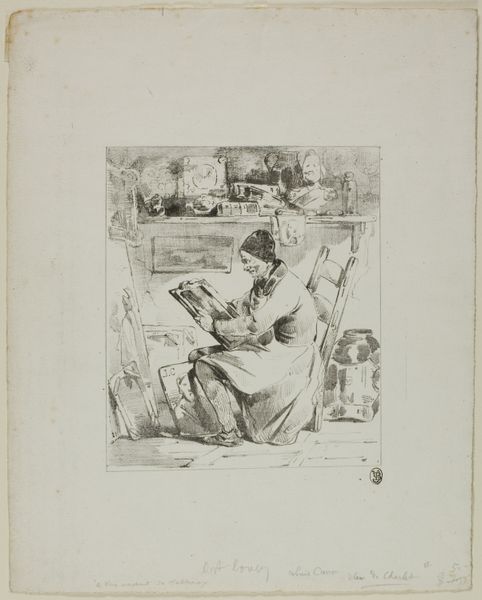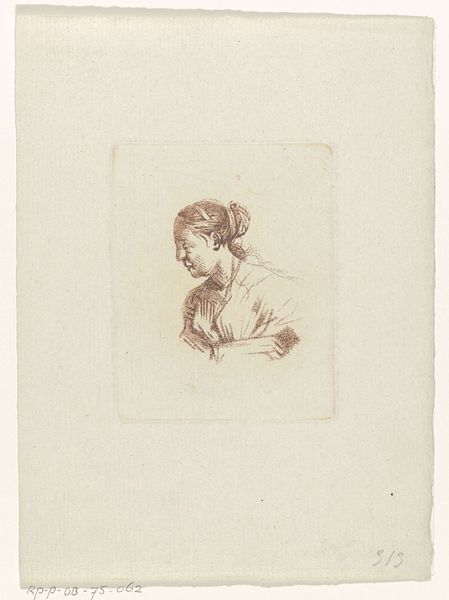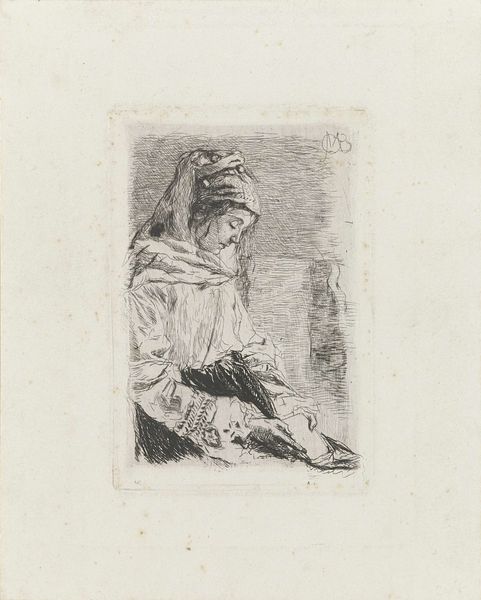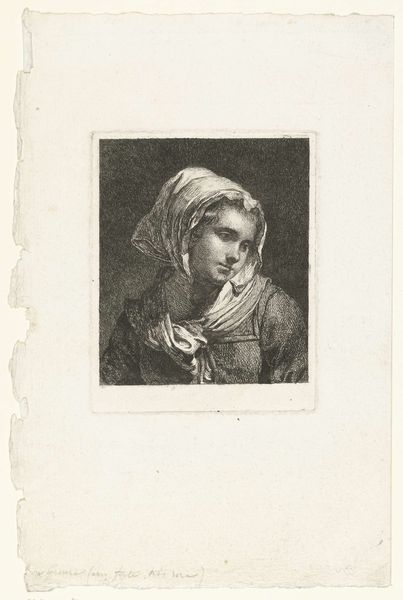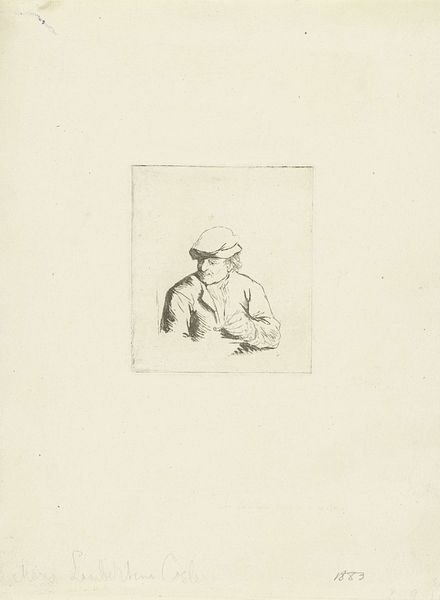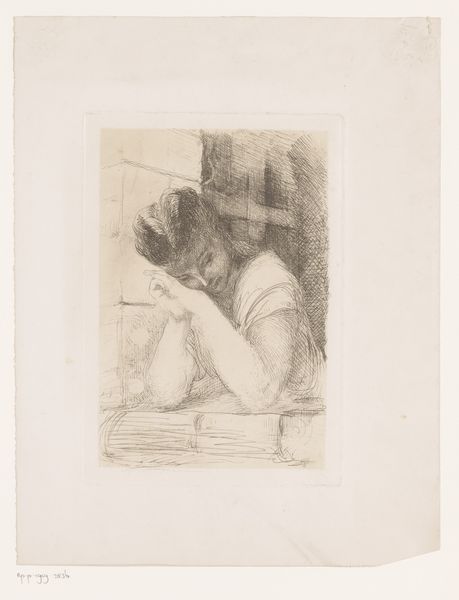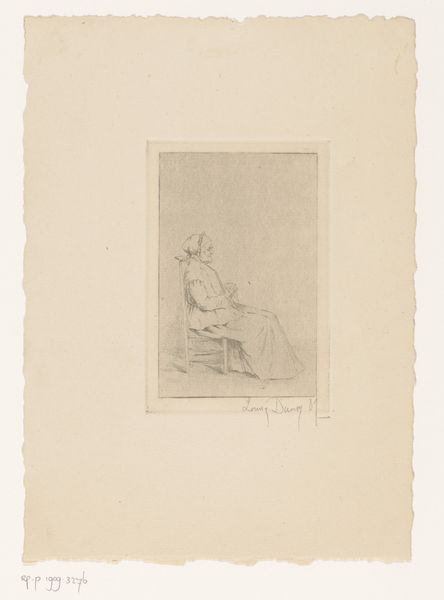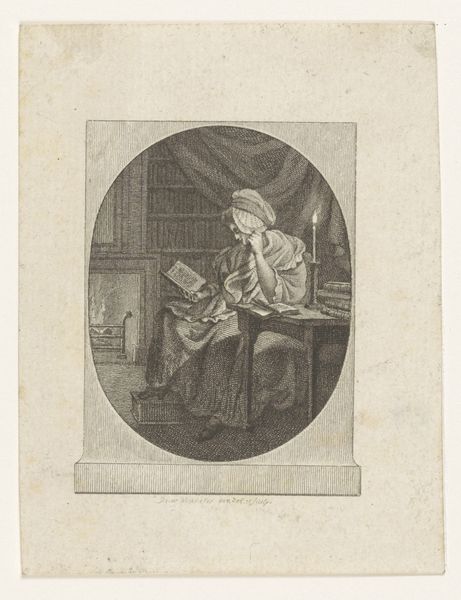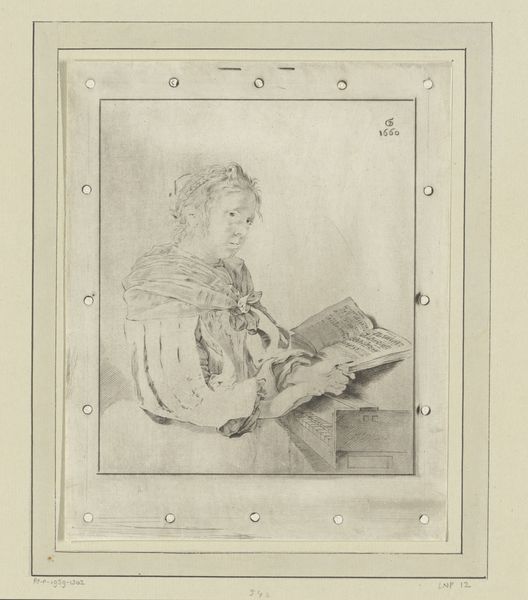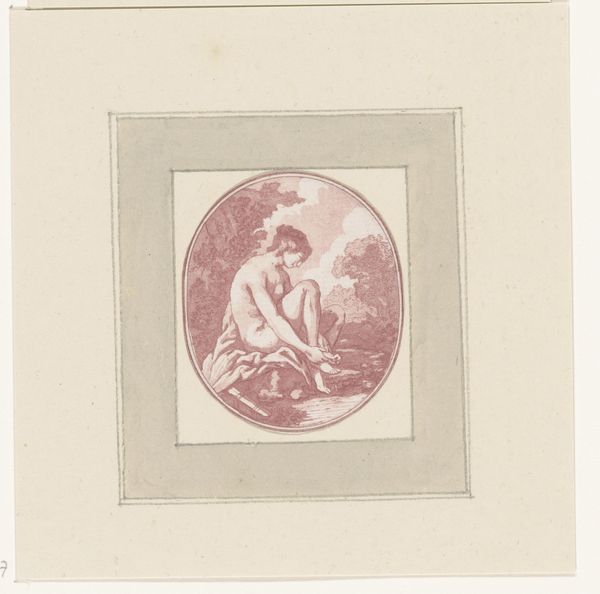
drawing, pencil
#
portrait
#
drawing
#
dutch-golden-age
#
pencil
#
genre-painting
Dimensions: height 243 mm, width 360 mm
Copyright: Rijks Museum: Open Domain
Curator: This is "Lezende Vrouw," or "Woman Reading," a pencil drawing by Moses ter Borch, dating from around 1660 to 1661. It's part of the Rijksmuseum collection. Editor: The drawing's intimacy really strikes me. The soft pencil work gives it a gentle, almost meditative quality. I'm immediately drawn to her quiet concentration. Curator: It's a superb example of Dutch Golden Age genre painting, focusing on everyday life. What’s interesting is how it depicts literacy, which, thanks to the Reformation and increased book production, became more widespread during this period. Reading wasn’t just for the elite anymore. Editor: The composition, though, is fairly simple, isn't it? A close-up portrait focusing on the woman and the book. There are subtle tonal variations achieved through skillful hatching. Look closely, and you'll see the attention to detail in her headdress and the folds of her clothing. Curator: Precisely. These domestic scenes, even in drawing form, were often commissioned or purchased by the burgeoning middle class to reflect their own aspirations and values—piety, diligence, domesticity. Editor: It seems almost devoid of explicit religious iconography, yet you sense a quiet spirituality, embedded within the act of reading. It prompts questions about the text. Is it devotional, or is it something else? And does the artist's identity shape our perception? Curator: Moses ter Borch came from a family of artists, which in itself reflects the growing professionalization of art during this era. His more famous brother, Gesina, also made domestic scenes. This highlights how art was becoming a family business. The prevalence of female artists shaped and responded to the art market, creating space for female viewpoints within popular visual culture. Editor: Looking at her hands, resting gently on the open book, brings us to the visual balance. It really does speak to a controlled aesthetic intent—form follows function, if you will. Curator: This drawing provides insight into the changing social role of art, particularly in reflecting and shaping new social values and gender roles that took root within 17th-century Dutch society. Editor: The piece feels strikingly personal, even after centuries, demonstrating an ability to distill beauty from the everyday moment. Curator: Indeed, Ter Borch’s skillful rendering elevates a simple domestic scene to an image imbued with both cultural significance and timeless beauty.
Comments
No comments
Be the first to comment and join the conversation on the ultimate creative platform.
